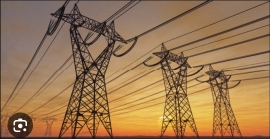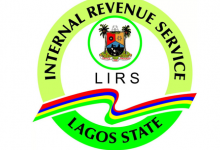
Electricity tariff jacks up by 25%
CITIZENS COMPASS – Hard times await Nigerians as electricity tarrif will be jacked up by 25 per cent.
This follows the unification of the Naira which has led to its depreciation at the investor and exporter window.
The Central Bank of Nigeria (CBN) recently made an announcement regarding the unification of all segments of Nigeria’s forex market, consolidating all windows into one.
This new system will allow market forces, such as supply and demand, to play a significant role in determining the exchange rate.
These changes were implemented as part of a broader effort to enhance liquidity and stability in the Nigerian Foreign Exchange (FX) Market. Under the new policy, all transactions will be conducted through the Investors and Exporters (I&E) window, where the exchange rate will be determined by market forces.
However, the unification of the exchange rate may also have an impact on electricity tariffs in the country. Experts in the electricity sector suggest that Nigerians can anticipate an increase in electricity tariffs soon when a minor review is conducted in December.
Director of Energy Markets and Rates Consultants, Dr Damilola Oluwole, explained that current electricity tariffs are designed with the inflation rate taken into account.
The inflation in tariffs is based on historical average rates from the National Bureau of Statistics (NBS), and the current figure stands at approximately 22.4 per cent to be precise. Therefore, due to the slight increase in CPI, the impact on tariffs is also expected to be marginal.
The foreign exchange (FX) rate used in the tariffs is based on the average CBN rate from the past six months, with a 1 per cent premium added to it. Dr Oluwole further states that by using the figures provided on the CBN’s website, the rate of USD/NGN 467.53 is obtained, representing a marginal increase compared to the current rate of USD/NGN 441.48.
This suggests that the recent circular issued by the CBN regarding rate guidance based on the I&E window will not fully take effect until the bi-annual tariff reviews in December 2023, at which point the I&E window rates will have been in effect for six months.
“From FMDQ’s website, the I&E window closed at USD/NGN 663 on Friday 16th June. If we assume that figure is used for December 2023 tariffs and hold all other factors constant, an increase of about 25-30 per cent in average tariffs can be expected for some distribution companies (DisCos),” he said.
Odion Omonfoman, the CEO of New Hampshire Capital, an electricity consulting company also shared a similar view. According to him, two key factors used in determining end-user tariff adjustments are inflation rate and foreign exchange rates, which have been increasing. Any further inflationary pressure would impact end-user tariffs.
While unifying the exchange While unifying the exchange rate is beneficial for the economy, it will lead to higher electricity and energy costs for customers. With the exchange rate unification, electricity tariffs will increase significantly due to the difference between the CBN rate and the new unified rates.
Additionally, the fluctuation of exchange rates means that the fixed exchange rate used in the MYTO 2022 is no longer valid. The Nigeria Electricity Regulatory Commission (NERC) will need to establish a new methodology to compute the applicable exchange rate during tariff adjustment periods.
As a result of the fluctuating exchange rates, electricity tariffs may see significant increases or decreases on a quarterly or bi-annual basis, he stated. (Source: nairametrics)







